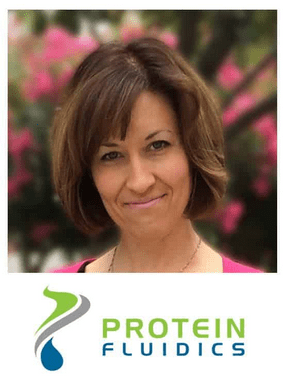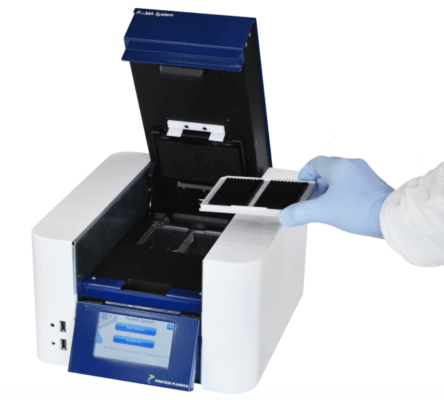Webinars
Patient-Derived Tumoroids in 3D Xeno-Free Hydrogel with Automated Biomarker Detection

Presenters

John Huang, PhD (TheWell Bioscience)
CEO & Founder
VitroGel®: a xeno-free, bio-functional hydrogel system for 3D cell culture applications.

Katya Nikolov, MD (Protein Fluidics, Inc.)
Senior Application Scientist
Applications of engineered hydrogel for automated assays using patient-derived 3D cell models.
Abstract
3D cell models like organoid and patient-derived tumoroid are becoming increasingly important for personalized medicine, drug screening and cell therapy. Such 3D models are highly relied on for microenvironment recapitulation. A reliable xeno-free hydrogel system that can closely mimic the natural extracellular matrix (ECM) is extremely important to replace the animal-based extracellular matrix to improve data consistency, high-throughput processing, and regulatory approval of current 3D cell models. Along with a reproducible environment, the automated workflows for drug treatment, downstream 3D biomarker detection or in situ supernatant sampling are important for studying disease progression and performing multifunctional profiling.
In this two-part webinar we share with you:

(A) VitroGel®, a xeno-free, bio-functional hydrogel system for 3D cell culture applications. The state-of-the-art hydrogel system from TheWell Bioscience gives an outstanding balance of biological functions and operating ease to establish 3D cell models. We will introduce the robust features of our 3D platform with multiple culture methods including 3D cell culture, 2D hydrogel coating, static suspension culture, hydrogel-cell bead, and as an injectable carrier. The ready-to-use VitroGel Hydrogel Matrix will be presented as an example for tumoroid long-term culture and co-culture models.

(B) Pu·MA System®, a benchtop automation device for performing 3D cell-based assays. In this case, Protein Fluidics will present data using triple negative breast cancer samples in xeno-free VitroGel® for biomarker detection upon drug treatment within the microfluidics-based Pu·MA System. This integrated workflow is followed by confocal microscopy within the assay flowchips. Further, Protein Fluidics will show that for these patient-derived samples, we observed no phenotypic differences when compared to Matrigel but found better ease of use with VitroGel such as temperature-independent and tunable gel properties.
Learn How:
- To establish 3D cell models using VitroGel hydrogel system
- Easy 3D cell viability test using the Cyto3D™ Live-Dead Assay
- To automated drug treatment and simple workflows for IF staining for biomarker detection
- The Pu·MA System can help streamline assay steps with imaging within the flowchips.


